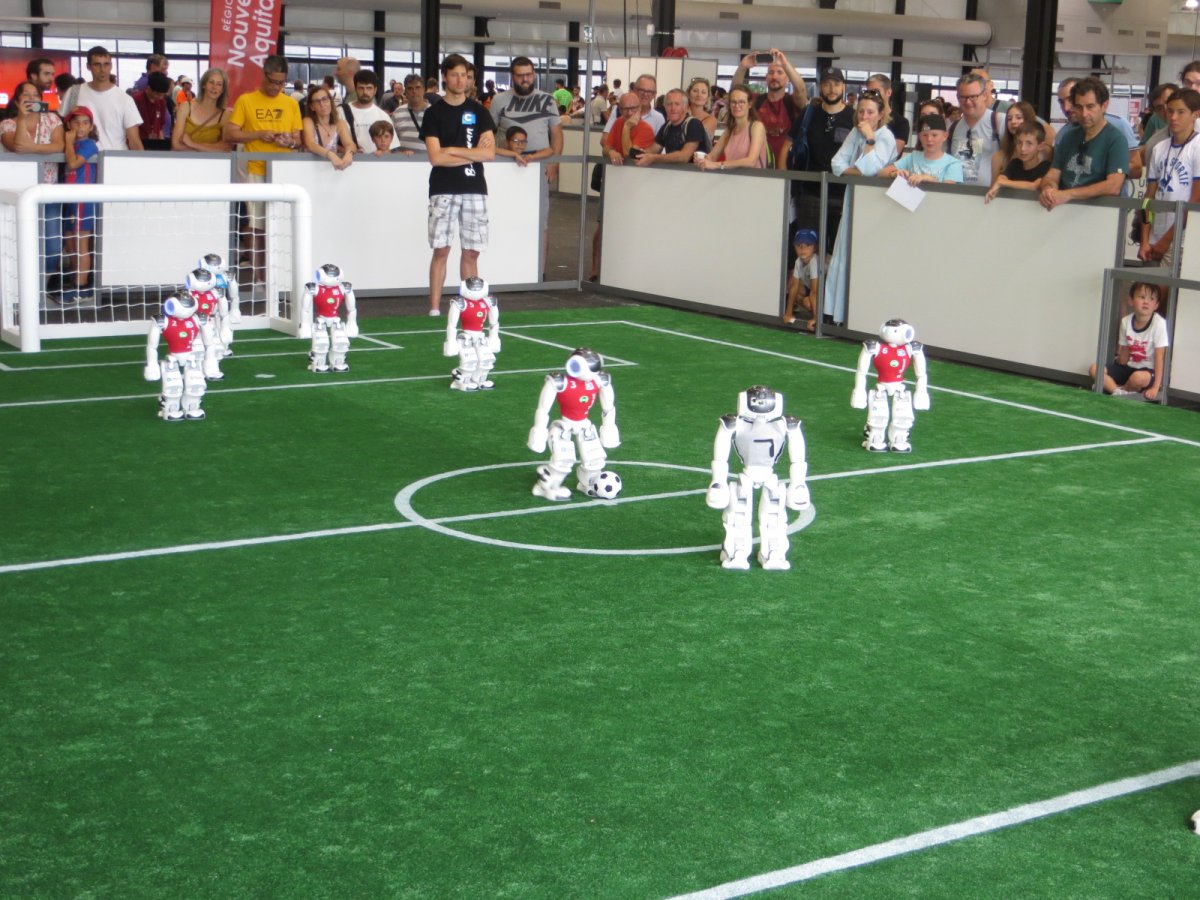RoboCup World Cup is a diverse event that showcases various forms of football played by robots. The event, which started in 1997, originally had three leagues: Simulation League, Small Size League, and Middle Size League. Over the years, new competitions have been added that don’t involve kicking balls. Meanwhile, the football leagues have expanded. The Simulation League now consists of 2D and 3D simulation, where virtual Nao robots play in a field that replicates physical factors like gravity and friction. The 2D simulation, on the other hand, only involves flat planes moving. While physical acrobatics are absent in 2D simulation, tactics and team cooperation play a crucial role.
In the Simulation League, tactics and algorithms are the main focus, providing an opportunity for teams to concentrate exclusively on their algorithms. The FRA United team from Germany is the only team that still competes in this league. Mathematics also plays a crucial role in the 3D simulation league, and learning processes have advanced the league in recent years, particularly in running behavior. The Magma Offenburg team has made progress through deep learning, enabling their players to move quickly and make accurate passes.
The Small Size League, which involves physical robots, is similar to the 2D simulation league. It features 11-on-11 games based on images captured by a camera above the pitch. The perspective and gameplay are similar to the 2D simulation but with a slight difference in the presence of physical robots. The use of “global vision” allows teams to focus on team strategies and fast-paced games.
In the Standard Platform League, the 3D simulation finds its physical counterpart. Here, teams use humanoid Nao robots with standardized hardware. The league consists of two divisions: Champions Cup and Challenge Shield. The RoboCup aims to make soccer more challenging for the robots each year to replicate the human soccer experience. For example, limitations have been imposed on the number of messages robots can exchange via radio, increasing the reliance on visual perception of the game situation.
The Humanoid League, particularly the Adult Size category, is challenging the reputation of the other leagues. However, most robots in this category are not yet capable of surviving falls unscathed and must be accompanied by a human. They also move slowly and uncertainly, making the games less attractive.
Overall, the RoboCup World Cup showcases the diversity and advancements in the world of robotic football. From virtual simulations to physical robots, the event provides a platform for teams to demonstrate their algorithms, strategies, and abilities.



